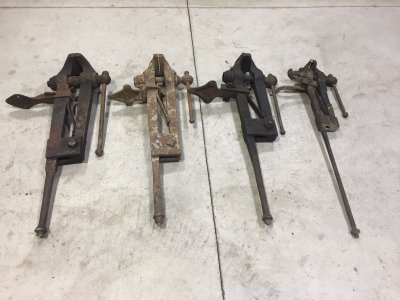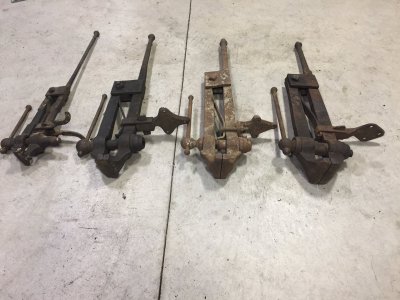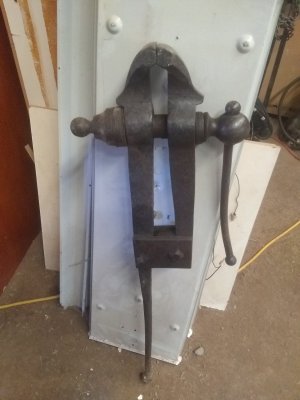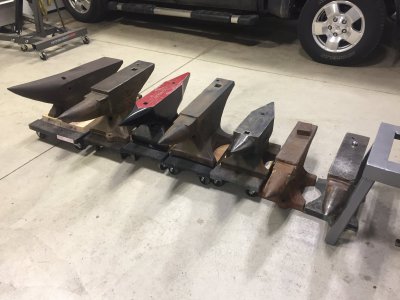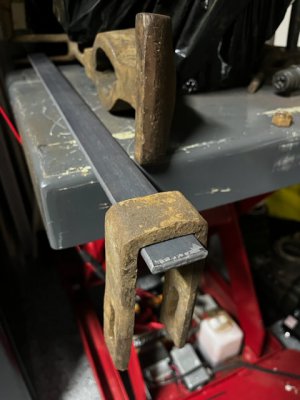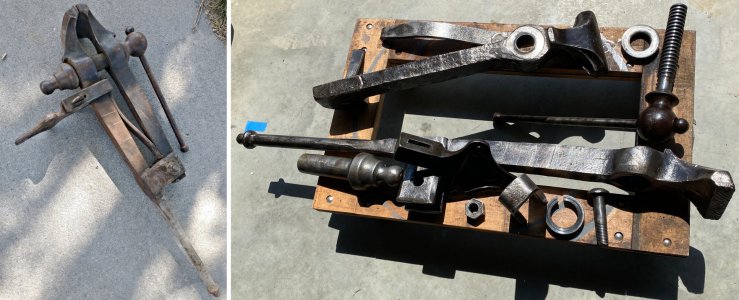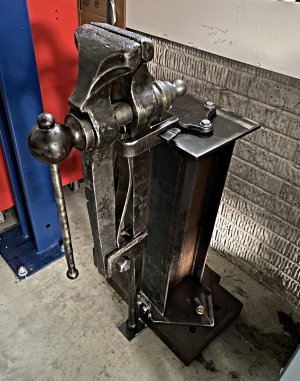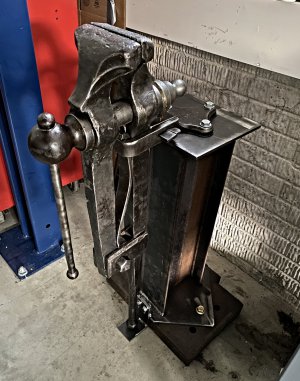When I bought my post vise, it was missing some pieces as well. The rear main screw collar was gone, and a hex nut had been substituted for the original. It also has a weld repair visible only when disassembled. This was my first post vise, and I probably could have done a lot better.
I made a rear collar out of a large shaft collar, and found a square replacement nut. I made a vise stand for it using a 150 lb. steel press plate for a base, along with an I beam column. Looks pretty good now, but I doubt I'll ever use it.


